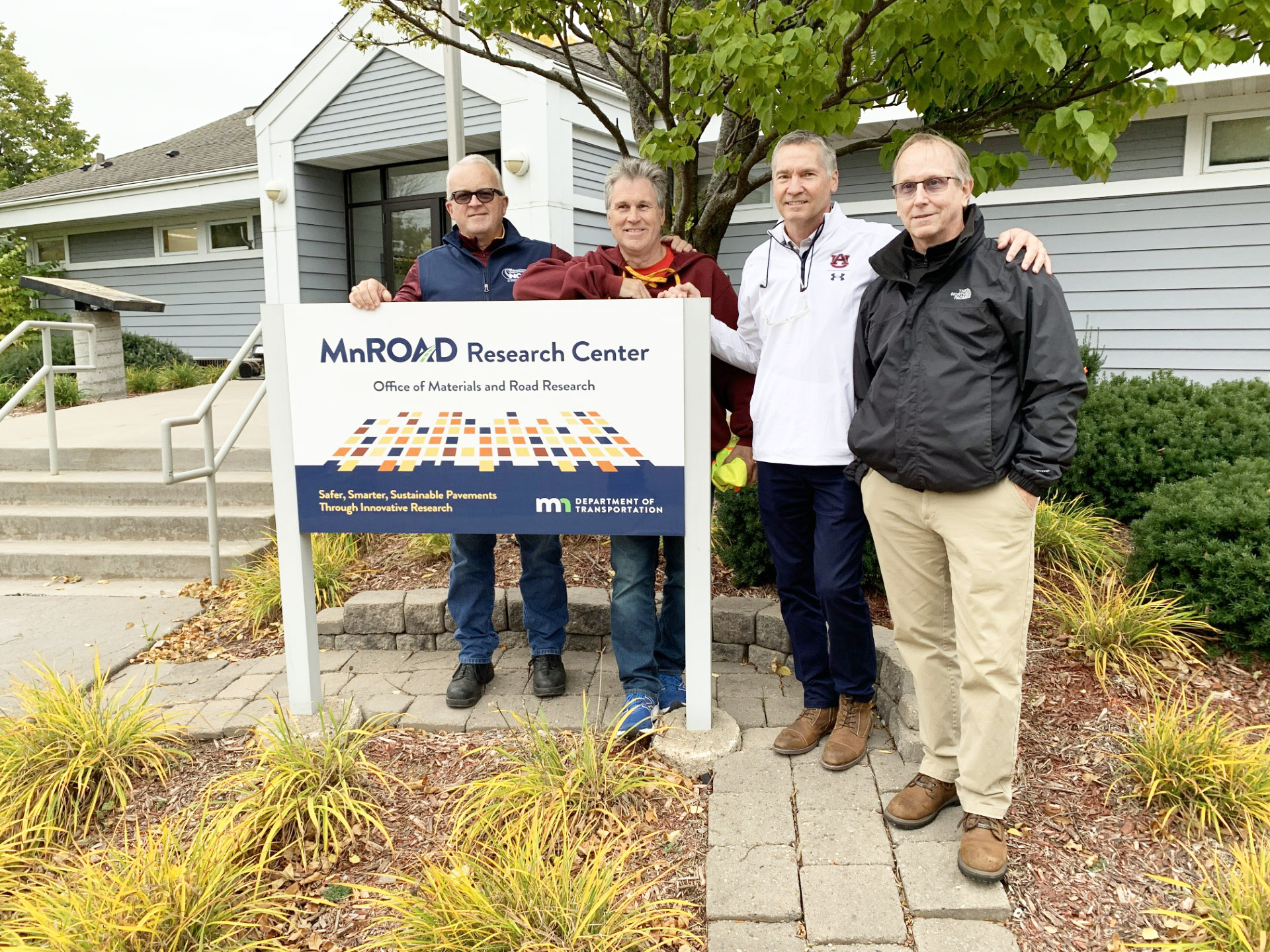MnROAD Partnership


NCAT partners with MnROAD, a full-scale pavement test road owned and operated by the Minnesota Department of Transportation, to evaluate pavement experiments in both the northern and southern climates.
NCAT and MnROAD operate the nation’s two largest full-scale pavement testing facilities where live trafficking under actual climate conditions provides an authentic environment for researchers to study.
Evaluating test sections in these two climates contributes to the development of:
- More durable, safe, and cost-effective pavements
- Performance analysis under extreme summer heat and winter cold
- Region-specific solutions for pavement materials and designs
The NCAT-MnROAD partnership began in 2015 and focuses on two national research needs:
- Pavement preservation experiments
- Validation of BMD cracking tests and evaluation of innovative asphalt mixture additives
Pavement Preservation Experiments
More than 30 pavement preservation treatments were installed in Alabama and Minnesota using materials appropriate for the respective climates. The northern pavement preservation experiment sections are located northeast of Minneapolis on:
- U.S. Route 169 – a high-volume road
- County State Aid Highway (CSAH) 8 – a low-volume road
Additionally, cold recycle sections with thin overlay surfaces were installed on 70th Street near MnROAD in 2019.
The Pavement Preservation Group pooled-fund study includes:
- Treatment selection and design
- Test site selection and layout
- Construction scheduling and technical assistance
- Quality assurance testing
- Ongoing performance monitoring and analysis
- Dissemination of findings through workshops, webinars, reports, and web-based tools
Validation of Cracking Tests
Since the late 1990s, the Superpave system successfully reduced rutting in asphalt pavements. However, new pavements and overlays struggled with:
- Cracking and raveling
- Inadequate durability due to lower asphalt content
- State agencies adjusting volumetric requirements and aggregate policies
Despite years of research and new cracking tests, most lacked real-world validation. In 2015, NCAT and MnROAD launched field validation experiments:
- NCAT – focused on top-down, load-related cracking
- MnROAD – focused on thermal cracking
Researchers evaluated multiple cracking tests based on:
- Correlation to actual field cracking
- Test preparation time and variability
- Equipment costs
The results of the NCAT top-down cracking experiment were documented in Chapter 2 of NCAT report 21-03.
Additive Group Experiment
Highway agencies frequently encounter claims that asphalt mixture additives enhance pavement performance. The Additive Group (AG) experiment provides independent, peer-reviewed research to assess these claims.
At the NCAT Test Track, thin pavement structures were built using various additives, including:
- Recycled tire rubber
- Recycled plastic
- High-strength fibers
Researchers compare the fatigue life of these experimental sections against control sections without additives. Analysis includes:
- Accelerated traffic testing
- Instrumentation data and lab testing
- Engineering models to predict long-term performance
At MnROAD, the same additives were tested in new sections to evaluate their resistance to:
- Reflection cracking
- Thermal cracking